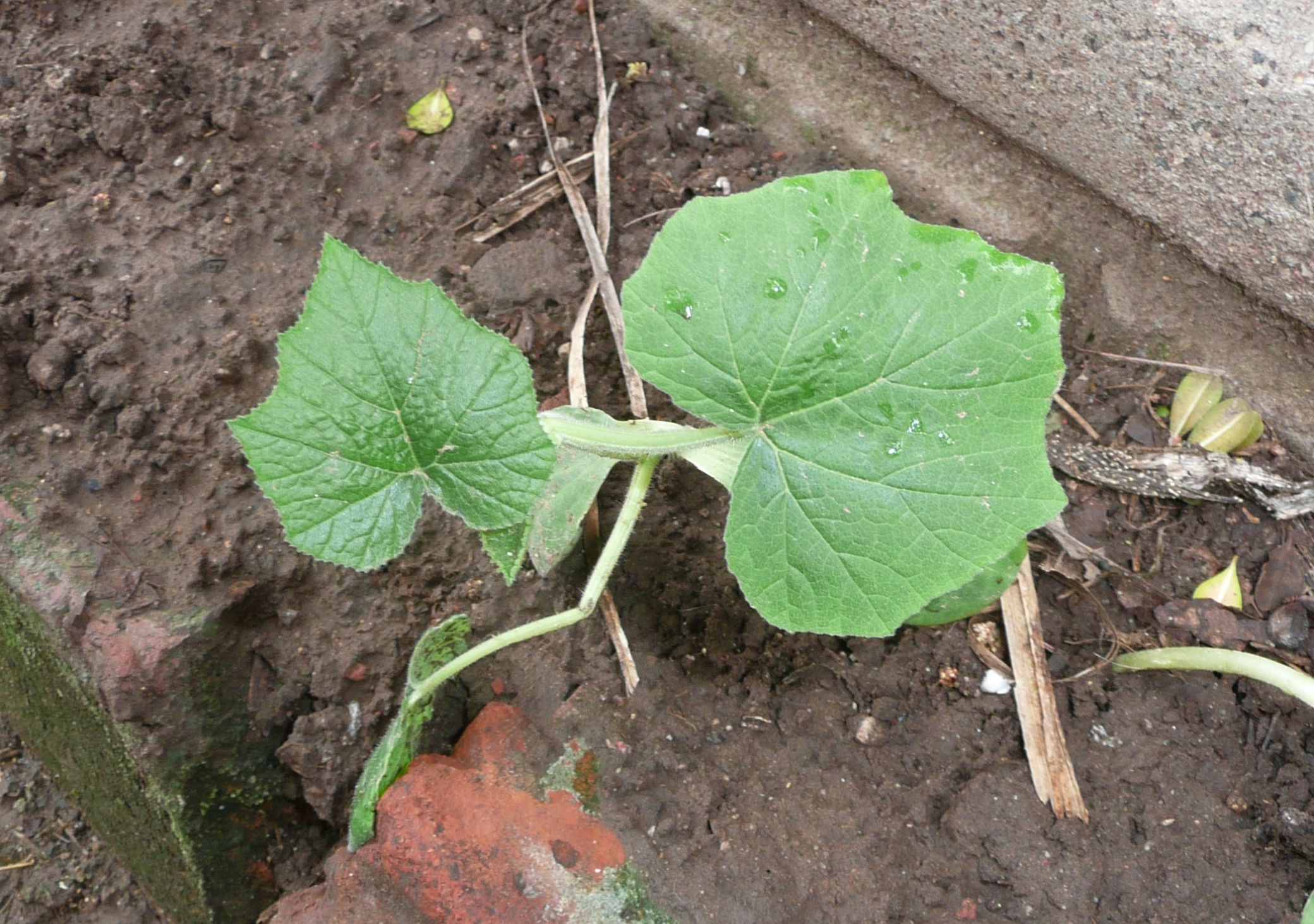Thinning
If your planting has gone well, there may be more cushaw vines than will fit when they are full sized. Some growers allow excess seedlings to compete for survival, while others practice thinning.
If you have more garden space in another location, you might also relocate some plants, or give away the excess seedlings.
When to evaluate
When to evaluate. Most seedlings seem healthy while they are nourished by their cotyledons. Vigor becomes more apparent once seedlings develop two pairs of true leaves and begin to metabolize their own nutrients.
Later in the season, the work of thinning transitions to the work of Selection: identifying the most promising squash seeds for the next season.
Positive traits
Positive traits that are evident at this stage of development include:
- Sturdy thick stems, not leggy.
- Green leaves with no yellowing, browning, or insect damage.
- Vigorous growth.
The power of diversity
In addition to prioritizing these traits, also look for differences between plants, and encourage diversity among healthy seedlings. Some vines will be better able to resist pests and make good fruit in your conditions.
Some plants will be better able to resist pests and make good fruit in your conditions. The surest way to find out which is to grow diverse populations. This guide offers practices and philosophy for cultivating cushaws using traditional “landrace” approaches. Landrace growers judiciously embrace cross-pollination to develop and maintain robust, resilient crops that adapt to local conditions.
How to thin
Use scissors or secateurs to cut the vine just above the soil to avoid disturbing the roots of other nearby plants.
This video from Mills Family Gardening demonstrates how to separate seedlings for replanting. You might also check out this forum discussion at permies.com for experienced observations and philosophy about culling plants. There is no single right way.
Squash harvests begin with thinned plants
Squash plants can provide you with food even before the first fruit has matured. If you’ve been fortunate and have too many seedlings, try eating the culled plants. The section on Harvesting includes more information about using the cushaw plants for shoots and greens.
